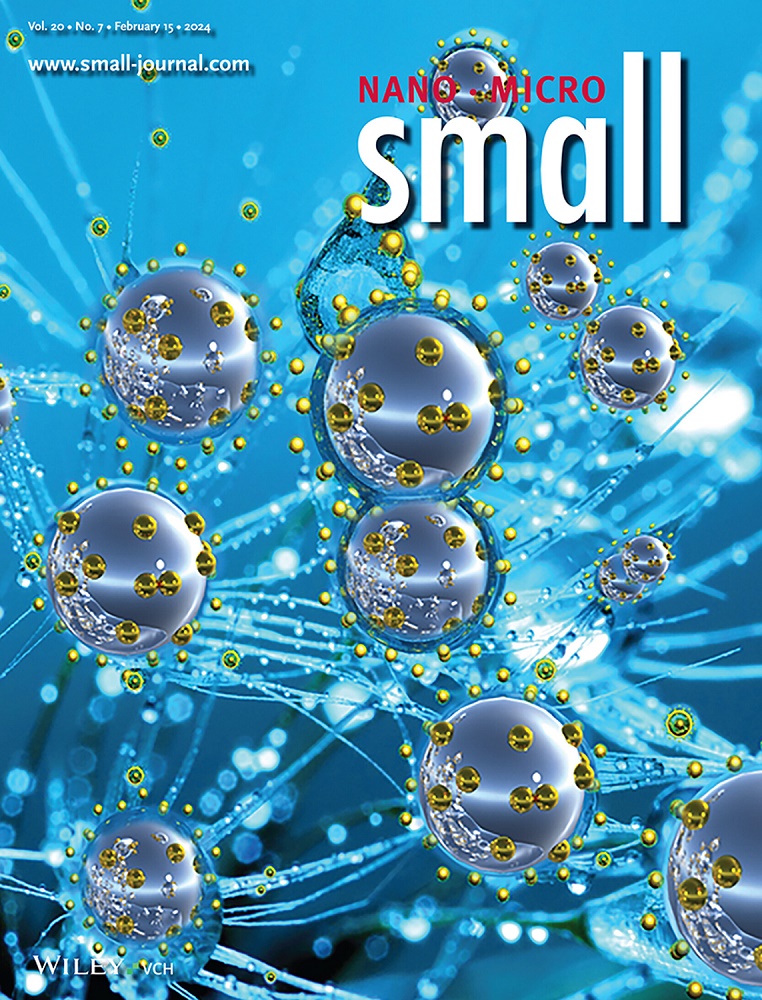Microstructural Engineering of Conductive MOF Nanocrystals for Multifunctional Heterostructures.
IF 13
2区 材料科学
Q1 CHEMISTRY, MULTIDISCIPLINARY
引用次数: 0
Abstract
Conductive metal-organic frameworks (cMOFs) have emerged as transformative materials, significantly expanding the functional landscape of conventional MOFs by integrating electrical conductivity. Despite this, harnessing their full potential in heterostructured architectures is constrained by challenges in finely tuning the critical structural parameters, notably the packing density and crystallographic orientation. This paper introduces an innovative approach to engineering the microstructure of cMOFs as conformal shell-enveloping spherical nanoparticles. The compactness of the cMOF layer is modulated by the crystallization kinetics, while a deliberate seeding process directed the alignment of cMOF nanocrystallites. These methodologies collectively facilitated the formation of densely packed, highly ordered nanocrystallite assemblies in a core-shell configuration, enhancing mechanical robustness, selective permeability, and electron transport. The resulting cMOF assembly markedly augmented the stability and electrochemical performance of the sulfur core, showing significant promise as a next-generation cathode material for lithium-sulfur batteries.多功能异质结构导电MOF纳米晶的微结构工程。
导电性金属有机框架(cMOFs)已成为一种变革性材料,通过集成导电性,极大地扩展了传统mof的功能景观。尽管如此,利用它们在异质结构体系结构中的全部潜力受到精细调整关键结构参数的挑战,特别是堆积密度和晶体取向。本文介绍了一种创新的方法来工程化cMOFs作为保形包壳球形纳米颗粒的微观结构。结晶动力学调节了cMOF层的致密性,而有意的播种过程指导了cMOF纳米晶体的排列。这些方法共同促进了在核壳结构中密集排列、高度有序的纳米晶体组件的形成,增强了机械稳健性、选择性渗透性和电子传递。由此产生的cMOF组件显著提高了硫芯的稳定性和电化学性能,显示出作为锂硫电池下一代正极材料的巨大前景。
本文章由计算机程序翻译,如有差异,请以英文原文为准。
求助全文
约1分钟内获得全文
求助全文
来源期刊

Small
工程技术-材料科学:综合
CiteScore
17.70
自引率
3.80%
发文量
1830
审稿时长
2.1 months
期刊介绍:
Small serves as an exceptional platform for both experimental and theoretical studies in fundamental and applied interdisciplinary research at the nano- and microscale. The journal offers a compelling mix of peer-reviewed Research Articles, Reviews, Perspectives, and Comments.
With a remarkable 2022 Journal Impact Factor of 13.3 (Journal Citation Reports from Clarivate Analytics, 2023), Small remains among the top multidisciplinary journals, covering a wide range of topics at the interface of materials science, chemistry, physics, engineering, medicine, and biology.
Small's readership includes biochemists, biologists, biomedical scientists, chemists, engineers, information technologists, materials scientists, physicists, and theoreticians alike.
 求助内容:
求助内容: 应助结果提醒方式:
应助结果提醒方式:


